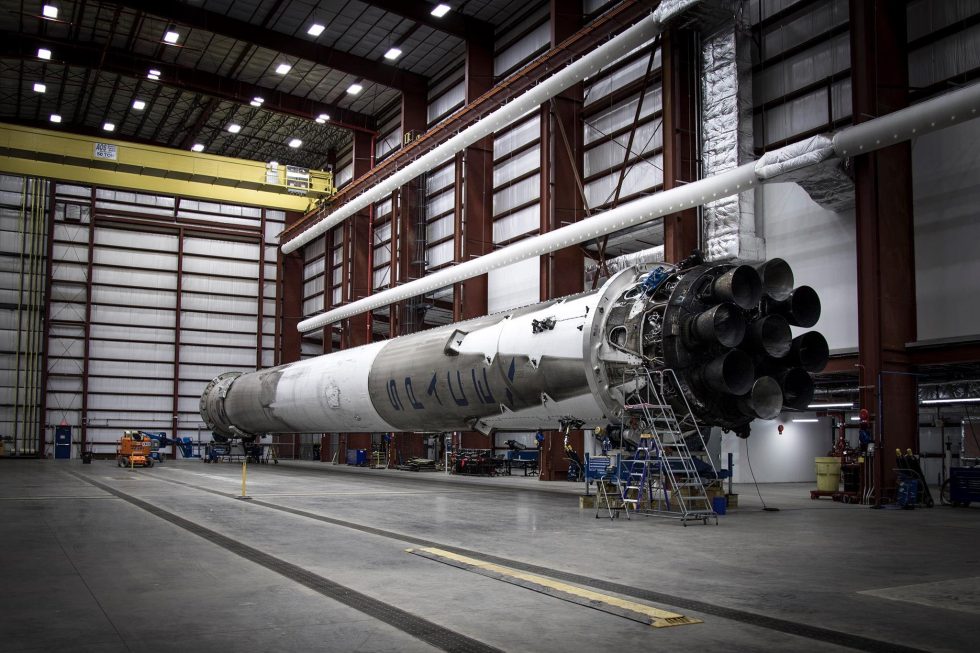
The Falcon 9 rocket not only survived, it now appears increasingly clear it did so in good shape. On Sunday, SpaceX released a new photo of the first stage of its Falcon 9 rocket that it successfully landed two weeks ago. Aside from soot, produced by the rocket's engines, the Falcon 9 booster appears to be structurally intact.
That was the assessment of SpaceX founder Elon Musk, who tweeted, "No damage found, ready to fire again," on New Year's Eve. Musk has said the flown booster will undergo "static fire" testing on the launch pad, in which the rocket is restrained while its engines are fired. After testing, the rocket is expected to become a valued artifact, although Musk has not said where its final resting place will be.
During a conference call with reporters after the launch and successful recovery of the Falcon 9 rocket on December 21, Musk said he expects the company will attempt to refly a Falcon 9 rocket sometime in 2016.
-
Close-up of used Falcon 9 booster in SpaceX's hangar.SpaceX
-
First look at the Falcon 9's upgraded Merlin engines.SpaceX
-
Another view of the Falcon 9.SpaceX
-
Falcon 9 booster shown shortly before landing.SpaceX
-
Getting closer.SpaceX
-
Almost there!SpaceX
-
The landing was pretty much dead center.SpaceX
-
A photo of the booster at Landing Zone 1 shortly after it touched down safely.SpaceX
-
What goes up must come down.SpaceX
SpaceX has more than a dozen launches on its manifest for the coming year, including the delivery of the Jason 3 satellite for the National Oceanic and Atmospheric Administration on (NOAA) January 17. That satellite will make detailed measurements of the Earth's sea level. SpaceX also has the launch of communications satellites for SES and, perhaps in February, its next cargo supply mission for the International Space Station.
As the NOAA satellite will be launched from Vandenberg Air Force Base in California, it is not clear when the next launch and recovery attempt will take place at SpaceX's Landing Zone 1 in Florida.
reader comments
139